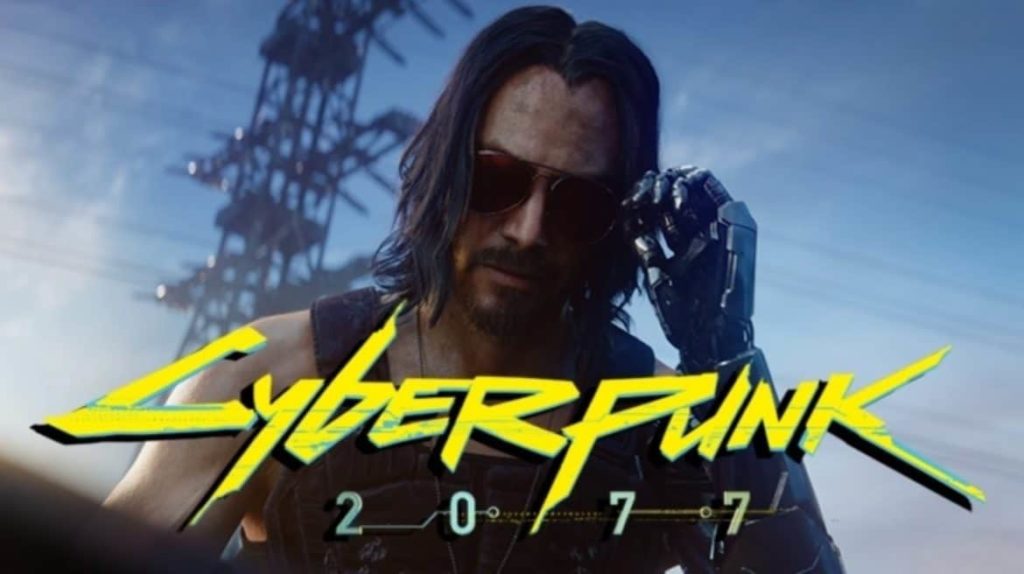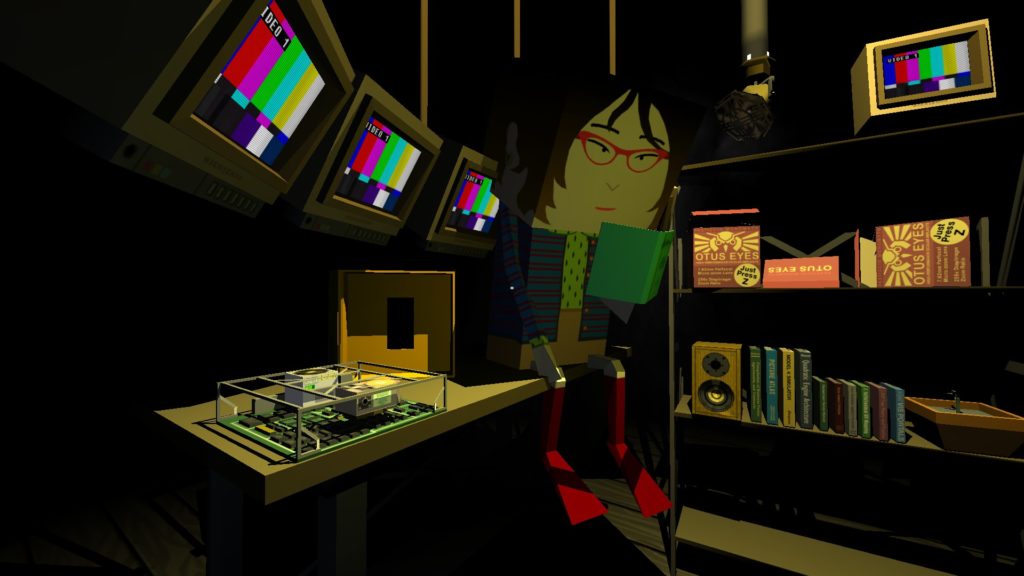“Retropunk”: Cyberpunk as Aesthetic Statis
INTRODUCTION
Given the specificity of this conference, it’s clear I don’t need to advocate that Cyberpunk is a conceptual and aesthetic force of multitudinous capacities. This is very clearly demonstrated simply by the listing of potential topics that have been put forth for discussion. However, when examining Cyberpunk as it relates to videogames, or rather as videogames relate to it, I contend that there is often a reducing of Cyberpunk to the exclusive status of genre tropes, and especially to visual aesthetics. Within this presentation I want to explore the idea that this process of reduction, of ‘genrification’, is often foundational to videogames’ employment and understanding of Cyberpunk.
THEORIES OF GENRE
In Dan North’s article Ghost in the Shell: The Noir Instinct, they detail how the invocation of a genre label can often operate ‘talismanically’, becoming “a constructing force that grafts interpretive codes onto the film text.”[1] In other words, the ostensible descriptor of noir (as in North’s example) is actually prescriptive, as its application operates post-facto in how we understand and read the text. The presence of the associated genre label immediately gives the work a series of characteristics that are assumed or taken for granted. More problematically, the applications of these labels also establishes an expectation for what will be encountered by the viewer going forward which, as North points out, has ramifications within “the systems of production, where conformity to a successful template can be a guarantor of success or a filtration system for projects that will be put into production.”[2] A genre label can ultimately be a constrictive construction – expanding a media text whilst simultaneously limiting its scope.
Further complicating matters is the particular problems that identifying videogame genres brings. Genre labelling within the videogame space is multifaceted, often encompassing both the visual and narrative genres, as well as the mechanics of the game. This complexity has been a subject of ongoing discussion within videogame academia, with much discussion regarding the complex set of influences on the taxonomic systems that underpin genres. Gerald Voorhees, in their article discussing the difficulties faced by videogame research in examining genre, wherein he specifically notes the way in which these difficulties replicate the continually revivified (and fairly tired) antagonisms between the camps of ludology and narratology theory, writes that “the consequence of our genre trouble is our general inability, as a field, to harness genre as a tool that contributes effectively to our larger critical and conceptual apparatuses.”[3]
These concepts of genre would typify the ‘label’ as being the most immediate means with which the viewer understands and reads a text. However, I contend that in recent times the way genre labels are identified and propagated has intensified within the commercial and pop-cultural space. The mere appearance of particular aesthetic elements in a text, almost always visual ones, can operate in a reflexively similar manner: as a genre label becomes increasingly codified it creates a feedback loop, whereby texts, in an effort to immediately and overtly signal their particular genre affiliation, begin to present extremely heightened visual signifiers. The aesthetic parameters of what ‘defines’ a particular genre become increasingly specified so much so that they eventually end up operating as ‘talismanically’ themselves. We have been taught to read any particular common visual trope as shorthand for precisely what the game’s genre is, and what it will entail.

Richard Nowell, describes genre as a fluid “system of communication comprising two components, the label and the corpus.”[4] Given the increasingly abstracted nature of media texts and their delivery platforms, perhaps the ‘corpus’ has been subsumed by the ‘label’ (the label being often indicated by imagery, or specific tags), meaning that texts can exist without specific contextual histories and are instead are often built upon imbricated layers of non-specific aesthetic reference and signaling. Put simply, the label presents a shorthand for a set of tropes that, given the relatively long stretch of time since its popular conception, has become increasingly abstracted away from the specificities of the original ‘corpus’ until we are left with only fragmentary marketable bits for how to conceptualise and implicitly understand videogames.[5]

A look at any digital distribution platform for videogames quickly reveals the specificity of how these games are aesthetically coded. Whether it be the endless subjection to ‘content’ that is algorithmically fed to viewers, readers, and players, or simply the overwhelming access to an impressive smorgasbord of media, the average player is often exposed repetitively and frequently to (ostensibly) precisely to what they enjoy. This saturation of specific interest coupled with fan-cultures’ practices of identification in, and cataloging of, tropes has allowed for a brute force understanding of convention; if you are bombarded with the same narrative and genre elements over and over, how can you not become hyper-sensitive to what constitutes a particular game you might be interested in?
CYBERPUNK AS STATIC GENRE
Videogames present Cyberpunk as an idea that is inextricably beholden to the imagery, fashion, and cityscape of 1980’s America and Japan. The expectations of a supposed faithfulness to a very specific set of aesthetic aspects is restrictive, and truthfully has lead to a large glut of games that operate along very similar visual, thematic, and mechanical lines – they all feature the same red and purple neon colourscheme, the same angular lines, the same bundle of wires attached to glowing helms of Tron-esque cyber-warriors. Even the indie games that appropriate the genre label will seemingly be composed of the same retro-infused pixel-art shorthand.[6] This fetishic longing for the imagined past is often presented to the player within a mechanical framework that allows the game to present both a stereotypical power-fantasy of the enhanced cyborg body, and an easily baked-in thematic critique of a late-capitalist ‘society’ beset by the horrors of climate change, automation, body-modification and oligopolistic capitalist excess.

Nowhere is this set of tropes better exemplified than within the upcoming Cyberpunk 2077. Cyberpunk 2077 is a game that, based on its trailers, web-presence, and even celebrity cameos essentially operates within an aesthetic space of utter stasis. Perhaps this should come as no surprise, given that the title and general setting of the game is directly taken from the 1988 pen-and-paper RPG ur-text Cyberpunk (a.k.a. Cyberpunk: 2020). However, the slavish adherence to a particular aesthetic notion of what the future could be envisioned as is deeply ironic. The attempted replication of the freewheelingly inventive capacities inherent in a pen-and-paper RPG within a videogame inevitably fail to capture the deeply humanistic quality that a player organically brings to the (literal) table. Moreover, the fetishisation of certain visual aesthetic sensibilities removes the potential for meaningful expansion of Cyberpunk in a way that runs contrary to the original spirit of as both a prediction and warning of the near future in a capacity that science-fiction had often failed to meaningfully do up till that point. As much as Cyberpunk 2077 might claim to embody the thematic ethos of ‘Cyberpunk’ at large, it more truly represents the ultimate commodification of the movement into a mass-consumable playground, within which the player can live out their safe, apolitical, and relatively mundane fantasy of driving ‘cool’ cars in a ‘cool’ city. Even Gibson himself, hardly as radical as he once was before his Twitter-led senescence, has decried it as simply being a “GTA skinned-over with a generic 80s retro-future”[7].

The inverse of Cyberpunk 2077, and the aesthetic stasis it represents, must surely be a videogame like Quadrilateral Cowboy, released in 2016. Through clever use of subversion and reference it can sneakily identify as a Cyberpunk videogame through clear deviation from the standard imagery that ostensibly defines it. Quadrilateral Cowboy, a ‘cyberpunk heist adventure’[8], is a game built on imaginative anachronisms: The visual iconography the game is one distinctly different from the standard videogame notions of a 1980’s neon-infused slick grim-dark Cyberpunk, instead featuring a grey 1990’s office-cubicle boxy cartoonish quality that presents the action and characters with a charm and softness uncommon to the genre. The game mechanics deviate from more standard ones of shooting and smashing (or racing, etc), instead featuring a thematically appropriate mix of logic puzzles with the player typing code into their portable ‘deck’ (nomenclature borrowed straight from classic Cyberpunk literature) and stealthy infiltration.
Quadrilateral Cowboy represents a break from the monotony of stereotypical, reductive, and static depictions of what Cyberpunk videogames could be. The desire to break free from the stultifying codifications of assumed genre, of marketing necessity, and of endless repetition. I offer this quick comparison as a means to provoke a discussion around the trappings of Cyberpunk within the popular consciousness, and how we might free it from the limited conceptual frameworks within videogames.
[1] Dan North. ‘Ghost in the Shell: The Noir Instinct’. In: Chi-Yun Shin, Mark Gallagher. East Asian Film Noir. 1st ed. London: I.B. Tauris & Co. Ltd, 2015. Pg 71
[2] Dan North. ‘Ghost in the Shell: The Noir Instinct’. In: Chi-Yun Shin, Mark Gallagher. East Asian Film Noir. 1st ed. London: I.B. Tauris & Co. Ltd, 2015. Pg 72
[3] https://www.kinephanos.ca/2019/genre-troubles-in-game-studies-ludology-agonism-and-social-action/
[4] Nowell, Richard. Blood Money. New York: Continuum, 2011. Print. p. 15
[5] Alternatively, one could argue that this process of genre reductionism falls within the remit of ‘Film Cycles’, as described by Steve Neale, Richard Nowell, et al.; or even as a sort of fan-culture enabled exercise in communally understood world/genrebuilding as popularly discussed by Henry Jenkins
[6] Some examples include games such as Satellite Reign, Ruiner, Invisible Inc, Syndicate, Katana: Zero, and frankly an endless plethora more. The homogeneity can be easily seen on the steam search page: https://store.steampowered.com/tags/en/Cyberpunk/
[7]https://www.pcgamer.com/au/william-gibson-doesnt-think-cyberpunk-2077-is-cyberpunk-enough/
[8] http://blendogames.com/qc/
Discord Discussion
This discussion has been copied from the Discord server, names have been reduced to first name, discussion threads have been grouped and edited for better readability.